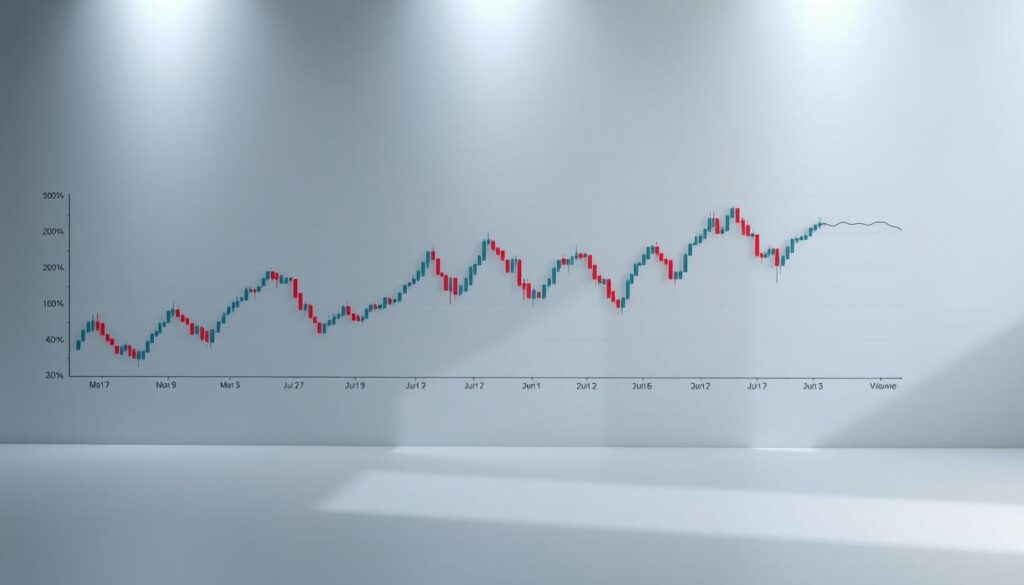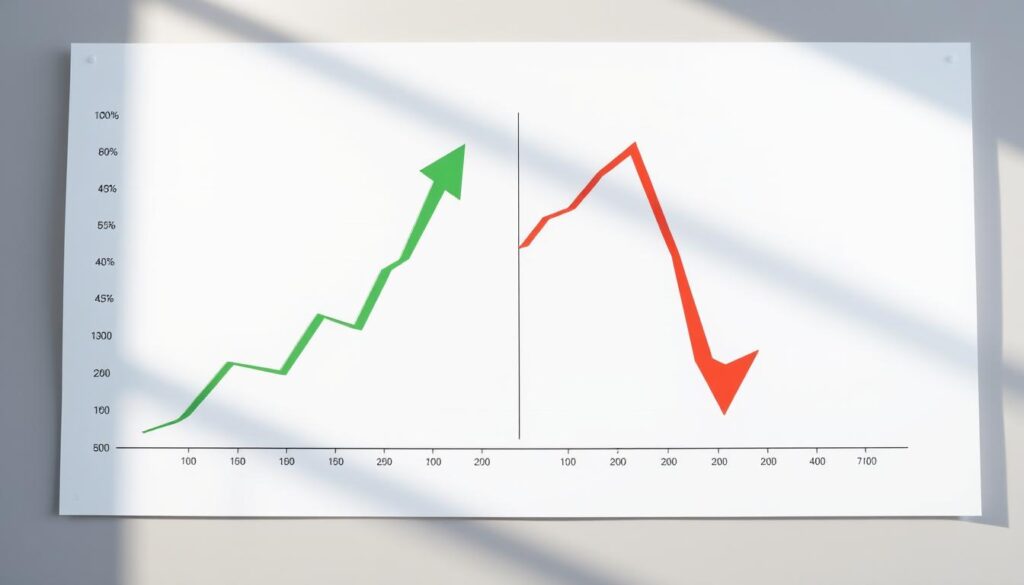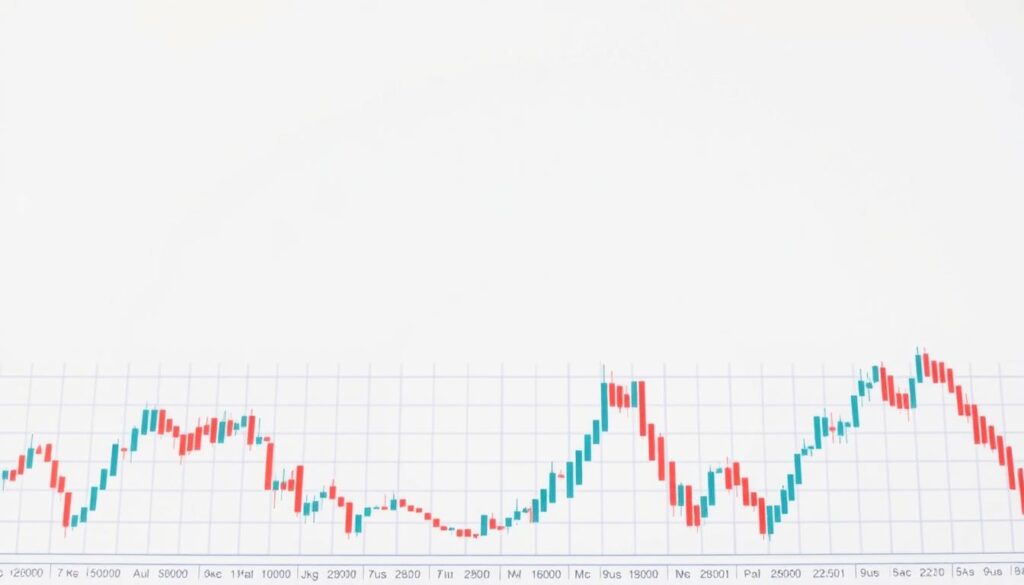Now Reading: Understanding Seasonal Crypto Market Trends Patterns
- 01
Understanding Seasonal Crypto Market Trends Patterns
Understanding Seasonal Crypto Market Trends Patterns

Digital currency markets show repeating behaviors that can help traders make better decisions. These recurring cycles offer valuable information for people looking to optimize their investment approaches across different timeframes.
Despite operating 24/7 and being relatively new compared to traditional investments, cryptocurrency environments display identifiable time-based movements. These affect prices, trading activity, and overall sentiment during specific periods.
Understanding why these cyclical movements matter is crucial for digital asset participants. The decentralized nature of these investments creates unique dynamics compared to conventional financial systems.
Recognizing these historical behaviors gives traders a systematic way to analyze market activity. This helps identify potential opportunities while managing risk more effectively.
Key Takeaways
- Cryptocurrency markets exhibit identifiable recurring behaviors throughout the year
- These patterns influence price movements and trading volumes significantly
- Time-based market movements differ from traditional financial systems
- Understanding these cycles helps identify strategic entry and exit points
- Historical patterns provide valuable context for risk management decisions
- Global participation creates unique seasonal dynamics in digital assets
- These insights should complement other analysis techniques for best results
Introduction: Unpacking the Role of Seasonality in Crypto Markets
The concept of recurring financial cycles has intrigued analysts for decades. These predictable shifts, known as seasonality, appear across various asset classes.
They are often driven by unique factors separate from broader economic movements. This independence can make them valuable tools for portfolio diversification.
Overview of Seasonal Influences in Finance
Traditional markets exhibit well-documented time-based behaviors. Holiday rallies and January effects are classic examples studied extensively.
These phenomena stem from psychological behavior and institutional calendar events. Understanding this foundation helps explain why digital assets might show similar characteristics.
Why Understanding Seasonality Matters for Crypto Investors
For participants in the cryptocurrency space, recognizing these cycles offers a strategic edge. This knowledge helps improve timing for entries and exits throughout the year.
Historical events like Bitcoin halvings create anticipation that influences price action. These insights complement technical analysis for a more complete view.
Investors can better manage risk by anticipating periods of high or low activity. This approach provides a framework for navigating volatility with greater confidence.
Seasonal Crypto Market Trends Patterns: Analysis & Insights
Distinctive recurring behaviors in digital assets provide valuable timing signals for strategic positioning. These systematic movements differ from random price swings by repeating across multiple cycles.
Defining Seasonal Patterns in the Cryptocurrency Landscape
A genuine seasonal effect shows statistical significance over extended periods. It is not a one-time event but a reliable phenomenon.
This consistency allows investors to build systematic approaches. They can capitalize on historically favorable windows.

Key Findings from Historical Data
Research analyzing Bitcoin data from 2015 to 2023 revealed a non-uniform return distribution. Specific hours consistently showed above or below-average performance.
The most economically significant returns occurred at 22:00 and 23:00 UTC. Conversely, 3:00 and 4:00 UTC hours demonstrated the worst performance.
Interestingly, the optimal trading window happens when all major traditional exchanges are closed. This suggests price movements are driven by factors unique to the digital asset space.
| Time Period (UTC) | Return Performance | Traditional Market Status |
|---|---|---|
| 22:00 – 23:00 | Significantly Above Average | All Major Markets Closed |
| 03:00 – 04:00 | Below Average | Asian Markets Open |
| 14:30 – 21:00 | Variable | NYSE Open |
These insights help identify strategic entry and exit points throughout the year. Understanding this data is crucial for managing volatility.
Historical Data and Market Timings: Key Insights
Extended research spanning multiple exchanges demonstrates predictable return patterns based on specific time intervals. This comprehensive analysis reveals consistent behaviors across different periods and market conditions.

Extended Data Analysis from Multiple Exchanges
Researchers confirmed that Bitcoin returns peak significantly at 22:00 and 23:00 UTC. A simple strategy buying at 21:00 and selling at 23:00 achieved remarkable results.
This approach generated an annualized return of 40.64% with strong risk-adjusted performance. The Calmar ratio of 1.79 indicates excellent risk management.
| Performance Metric | Seasonality Strategy | Underlying Bitcoin |
|---|---|---|
| Annualized Return | 40.64% | Variable |
| Maximum Drawdown | -22.7% | Over -70% |
| Calmar Ratio | 1.79 | Lower |
| Best Performance Window | 22:00-23:00 UTC | N/A |
The Significance of Trading Hours in Crypto
Despite 24/7 operation, digital assets show distinct hourly patterns. The most significant returns occur when traditional exchanges are closed.
Proper data analysis requires multiple sources. These include exchange data, on-chain metrics, and macroeconomic variables.
This information helps investors make better trading decisions during specific time windows. The approach reduces risk while capturing substantial returns.
Weekly Patterns and Day-Specific Trading Considerations
Weekly analysis reveals distinct performance variations across different days in digital asset trading. This examination of day-specific behaviors provides valuable insights beyond broader time-based movements.

Understanding these weekly rhythms helps investors optimize their timing decisions. The data shows consistent differences in performance across the seven-day cycle.
Impact of Weekdays on Bitcoin Returns
Research dividing returns by day uncovered compelling weekly patterns. Friday consistently delivered the strongest results during optimal evening hours.
Thursday ranked as the second-best day for strategic positioning. Weekend days also showed notable performance, indicating these effects extend beyond traditional business hours.
The relationship between Bitcoin’s price movements and specific weekdays demonstrates systematic behavior. This information helps traders anticipate favorable conditions.
Case Study: Friday and Thursday Trading Trends
Friday’s superior performance during the 22:00-23:00 UTC window appears across multiple years. This consistency suggests end-of-week dynamics create unique opportunities.
Thursday’s strong showing as the second-best day provides additional strategic windows. Both days outperformed other weekdays significantly in historical data.
These findings help investors focus their activity on historically favorable periods. Incorporating weekly analysis enhances timing precision for better risk-adjusted returns.
Uptrend vs. Downtrend: Market Trend Influences
The direction of broader price movements significantly impacts the effectiveness of time-based approaches. Research reveals that identical strategies produce markedly different results during bullish and bearish phases.

This analysis examines how current momentum influences seasonal pattern strength. Understanding these dynamics helps investors align their timing with favorable conditions.
Utilizing Moving Averages to Identify Trends
Moving averages serve as objective benchmarks for determining market direction. Researchers calculated 10, 20, 50, and 200-day averages from daily data centered at 0:00 UTC.
An uptrend occurs when price exceeds its moving average. A downtrend happens when price falls below this critical level. These classifications create clear frameworks for different trading environments.
Comparison of Trading Outcomes in Different Market Conditions
Uptrend days demonstrate significantly stronger patterns during the 21:00-23:00 UTC window. Seasonality effects amplify when aligned with positive momentum rather than fighting bearish trends.
Strategies focusing exclusively on uptrend days show improved performance characteristics. Different moving average periods offer varying effectiveness for trend identification.
Combining trend analysis with time-based advantages creates more robust approaches. This alignment potentially improves success rates while reducing exposure during unfavorable conditions.
Historical Volatility: Understanding High and Low Volatility Periods
Market turbulence levels significantly impact the effectiveness of time-based trading approaches. Researchers developed a systematic method to categorize different volatility environments using objective measurements.
Evaluating 30-Day Historical Volatility
The analysis calculated 30-day historical volatility using hourly performance data. This rolling measurement provided a dynamic view of market turbulence over time.
Researchers established the median volatility value over 365-day intervals. Each 24-hour period was then classified as high or low volatility based on this benchmark.
The calculation occurred daily at 0:00 UTC time. This created a consistent framework for comparing different market conditions throughout the year.
Risk Management During High Volatility Intervals
Analysis revealed that days with higher volatility levels produced notably stronger returns during the 22:00-23:00 UTC window. This finding suggests that seasonal effects amplify during turbulent periods.
A strategy focusing exclusively on high volatility days achieved impressive results. It generated 37.26% annualized returns with only -18.87% maximum drawdown.
The Calmar ratio of 1.97 demonstrated superior risk-adjusted performance. This approach paradoxically improved safety while capturing greater returns during specific hours.
Investors can use these insights to concentrate activity during favorable conditions. Proper risk management becomes especially important during high volatility intervals.
Trading Strategies: Applying Seasonal Patterns for Better Returns
Translating research findings into actionable trading methods provides measurable advantages for strategic positioning. These systematic approaches help investors capitalize on time-based inefficiencies.
Optimized Entry and Exit Timings Based on Data
A straightforward approach demonstrates impressive results. Buying Bitcoin at 21:00 UTC and selling at 23:00 UTC generated 40.64% annualized returns.
This simple strategy maintained strong performance despite challenging periods. The Calmar ratio of 1.79 indicates excellent risk management.
Simple Seasonality Strategies and Their Performance
Refining these approaches enhances outcomes significantly. Trading exclusively during high volatility days achieved 37.26% annualized returns.
This refined method showed the highest risk-adjusted performance. Maximum drawdown was limited to -18.87% with a Calmar ratio of 1.97.
Layered strategies combining multiple analytical dimensions outperform basic time-based rules. Proper risk management remains essential for long-term success.
External Factors and Global Events: Shaping Crypto Seasonality
Global developments and policy decisions create powerful forces that reshape investment landscapes in the digital currency space. These external influences interact with time-based behaviors to create complex dynamics.
Influence of Regulatory Announcements and Global News
Policy changes from major financial authorities significantly impact digital asset behavior. Legal classifications and enforcement actions often trigger substantial price movements.
These announcements frequently align with specific periods like fiscal year-ends. This timing creates predictable windows where volatility may increase.
How Economic Updates Impact Crypto Trends
Interest rate decisions and inflation reports influence capital flows between asset classes. Employment data releases can shift risk appetite among investors.
Bitcoin halving events represent unique predictable factors. Occurring every four years, they reduce mining rewards by 50%.
This mechanism controls new coin supply and preserves scarcity. Historical data shows significant price movements following each halving cycle.
Understanding these external forces helps investors navigate complex conditions. Remaining adaptable to significant developments is essential for capital preservation.
Integrating Technical Analysis with Seasonal Insights
Chart patterns and mathematical ratios offer concrete entry and exit points that complement broader timing strategies. This integration creates a robust framework for digital asset participants.
Technical tools provide the precision needed to execute approaches based on recurring cycles effectively.
Role of Chart Patterns and Fibonacci Retracements
Formations like Head-and-Shoulders and Double Tops show high reliability in digital assets. These visual representations reflect crowd psychology.
Fibonacci retracements identify potential support and resistance levels. Key ratios like 38.2% and 61.8% frequently align with turning points.
Combining these tools with timing analysis creates synergistic benefits. The approach helps investors refine specific entry points with greater accuracy.
Tools and Platforms for Data-Driven Decision Making
Platforms like TradingView provide comprehensive charting capabilities for pattern recognition. These tools help traders identify formations across different timeframes.
CoinGlass offers derivatives data that complements technical analysis. Glassnode provides on-chain metrics for deeper insights.
These resources support informed trading decisions when combined with timing strategies. Proper technical analysis chart patterns understanding enhances overall effectiveness.
Conclusion
The integration of multiple analytical dimensions provides traders with probabilistic edges during specific windows. Historical research confirms that digital assets display recurring behaviors across hourly, weekly, and volatility-based timeframes.
Simple approaches focusing on optimal hours and conditions have demonstrated impressive results with annualized returns exceeding 37%. These methods significantly reduced maximum drawdown compared to basic holding strategies.
Successful implementation requires combining temporal insights with technical tools and risk management protocols. Moving averages help identify favorable momentum, while volatility assessment concentrates activity during productive periods.
External developments like regulatory changes and economic updates can influence these cycles. Remaining adaptable to fundamental shifts ensures strategies stay relevant across changing conditions.
Understanding these time-based advantages doesn’t guarantee predictions but improves probability. When combined with proper position sizing and diversification, these insights help navigate digital asset participation with greater confidence.
FAQ
What exactly are seasonal patterns in the cryptocurrency landscape?
These are recurring price movements observed at specific times of the year. Historical information often shows that digital assets like Bitcoin may exhibit certain tendencies during particular months or weeks, influenced by a combination of factors.
How can understanding these patterns help my investment strategy?
Recognizing these tendencies provides valuable insights for timing. It can help investors identify periods with historically higher probability for positive returns or increased volatility, allowing for more informed decision-making and improved risk management.
Are there specific days of the week that are better for trading?
Analysis of historical data reveals that certain weekdays, like Fridays, have shown different return profiles compared to others. However, the effectiveness of day-specific trading can be heavily influenced by the overall market trend, whether it’s an uptrend or downtrend.
What tools can I use to identify these trends and patterns?
A> Many traders integrate these insights with technical analysis. Platforms like TradingView offer tools such as moving averages and Fibonacci retracements. Combining these chart patterns with historical seasonality data can create a powerful framework for action.
How do external events, like regulatory news, affect these seasonal tendencies?
Global events and economic updates are significant factors that can override or amplify typical patterns. A major announcement can cause sudden price movements, increasing volatility and disrupting historical averages, making it crucial to stay informed.
What is a simple strategy based on this information?
One straightforward approach involves focusing on optimized entry and exit timings suggested by the data. For instance, some strategies might suggest increased exposure during periods with historically strong performance while practicing strict risk management during high-volatility intervals.














